Tom's Guide Verdict
Get the DJI Osmo Action if you need an action cam for your selfies. However, we think the GoPro 7 takes better motion-stabilized video.
Pros
- +
Good motion stabilization
- +
Forward-facing screen
- +
Rich colors in video
Cons
- -
Motion stabilization doesn't work with HDR
- -
No way to livestream to social media
Why you can trust Tom's Guide
A few months after launching a handheld, gimbal-mounted camera, the drone company DJI is diversifying its line yet again with the DJI Osmo Action, which looks to go head to head with industry leader GoPro for the title of best action camera.
But while this camera has some innovative features, such as a forward-looking screen for selfie enthusiasts, there are still a few things the GoPro does better.
DJI Osmo Action vs. GoPro Hero7 Black: Specs Compared
| Row 0 - Cell 0 | DJI Osmo Action | GoPro Hero7 Black |
| Price | $349 | $349 |
| Max Video Resolution | 4K/60 frames-per-second | 4K/60fps |
| Still Photos | 12 megapixels | 12MP |
| Max Slo-Mo | 240 fps (1080p) | 240 fps (1080p) |
| Image Stabilization | Yes | Yes |
| Water Resistance | 11 meters | 10 m |
| Voice Control | Yes | Yes |
| Size | 2.6 x 1.45 x 1.25 inches | 2.4 x 1.75 x 1.26 inches |
| Weight | 4.4 ounces | 4.1 ounces |
| Battery Life (est.) | 95 minutes (4K/30 fps) | 85-90 minutes (4K/30 fps) |
Selfie screen
For the most part, the Osmo Action looks like any other GoPro clone: It has a rectangular body with a camera on the front, and a color touch screen on the back. However, unique to the Osmo Action is a 1.4-inch color screen on the front that makes it easier for selfie-ists to frame themselves in the shot.
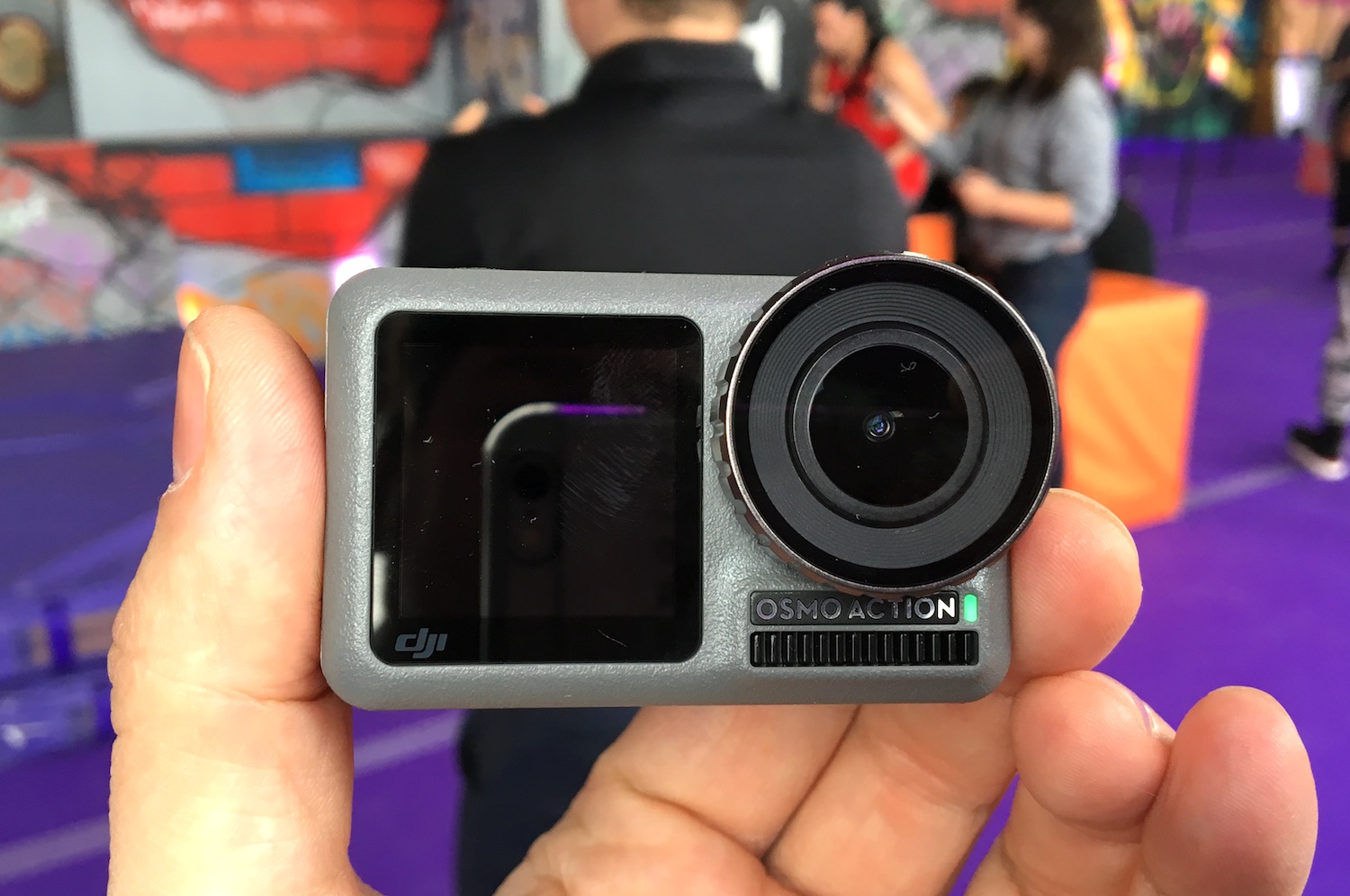
Press and hold the Quick Select button on the side of the Osmo action, and you will switch from the rear to the front display. This display isn't a touch screen, but is in color, and also shows information such as battery life and shooting mode. (You can also double-tap the rear screen with two fingers to switch displays.)
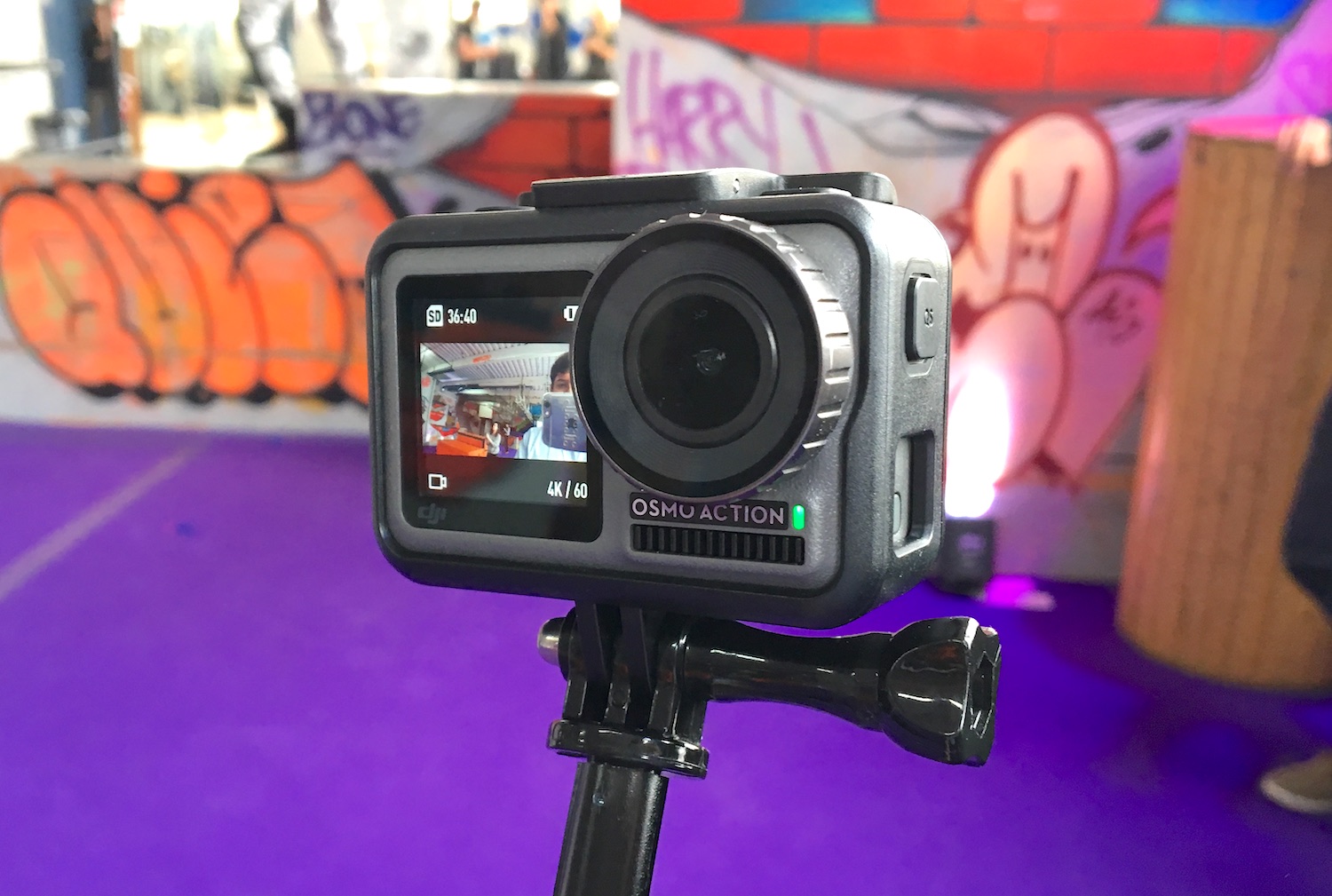
It's pretty handy for when you're holding the Osmo Action at arms' length (or at the end of a selfie stick), though anything farther away may make it tricky to see the screen.
Tried-and-true design
A door on the side of the Osmo Action opens to reveal a USB-C port and a microSD card slot. The bottom has another door for the battery, and is held in place by two latches. A Quick Select button along the left side of the Osmo Action lets you switch between various shooting modes; you can configure which modes show up in this menu. By comparison, the GoPro Hero7 Black only lets you switch between photo, video and timelapse.
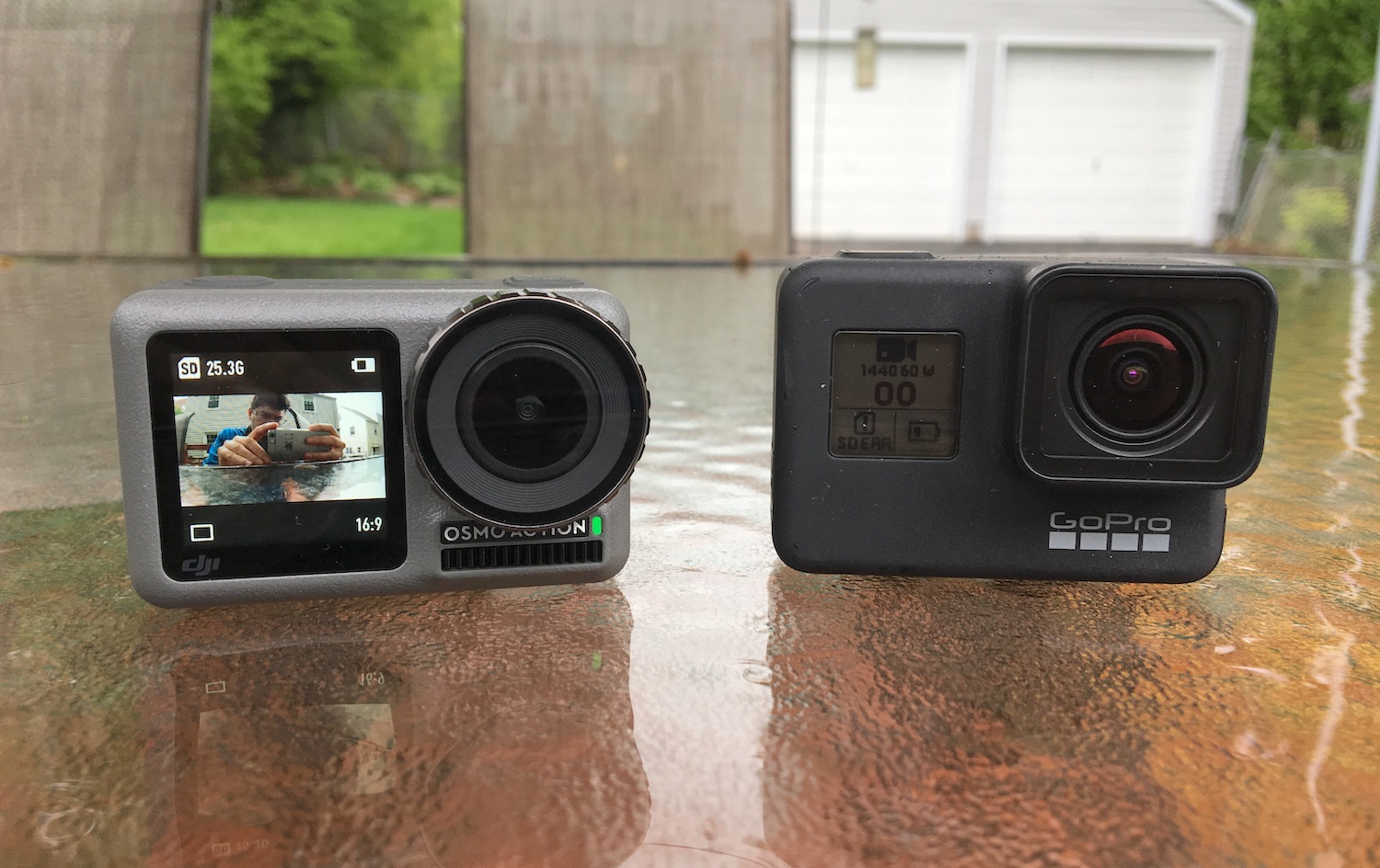
Similar to the GoPro, you can unscrew the front lens cover of the Osmo Action to attach various filters; the camera comes with a neutral density, polarizer and underwater filters. Being screw-mounted, these filters are a lot easier to swap out than on the Hero7, which uses a bayonet-style mount for its lens cover.
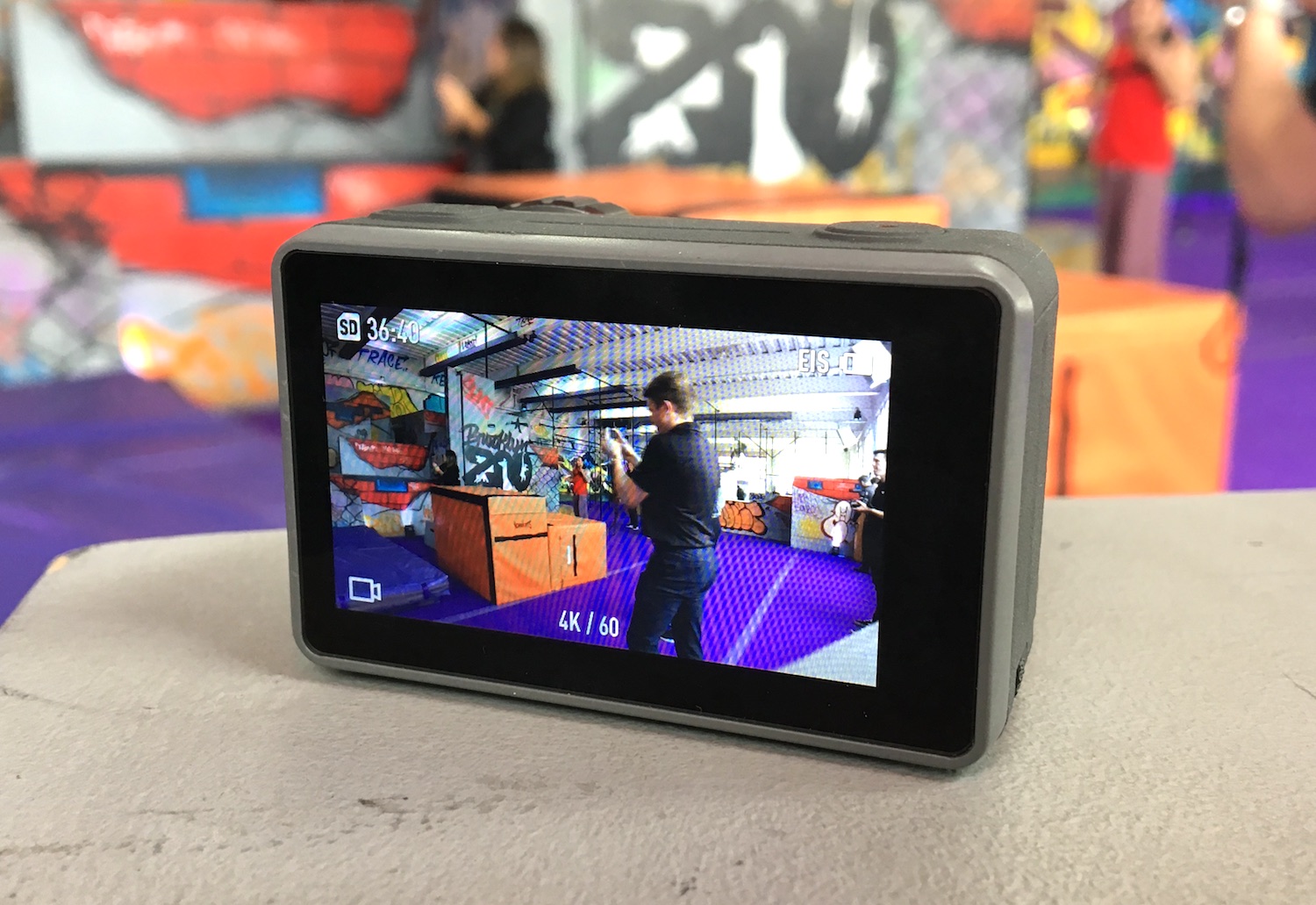
Like the GoPro Hero7, the Osmo Action has a color touch screen that lets you change settings, switch modes and more. The Osmo's 2.25-inch display is notably larger than the Hero’s screen, which I appreciated. There’s also less of a bezel around the screen, too.
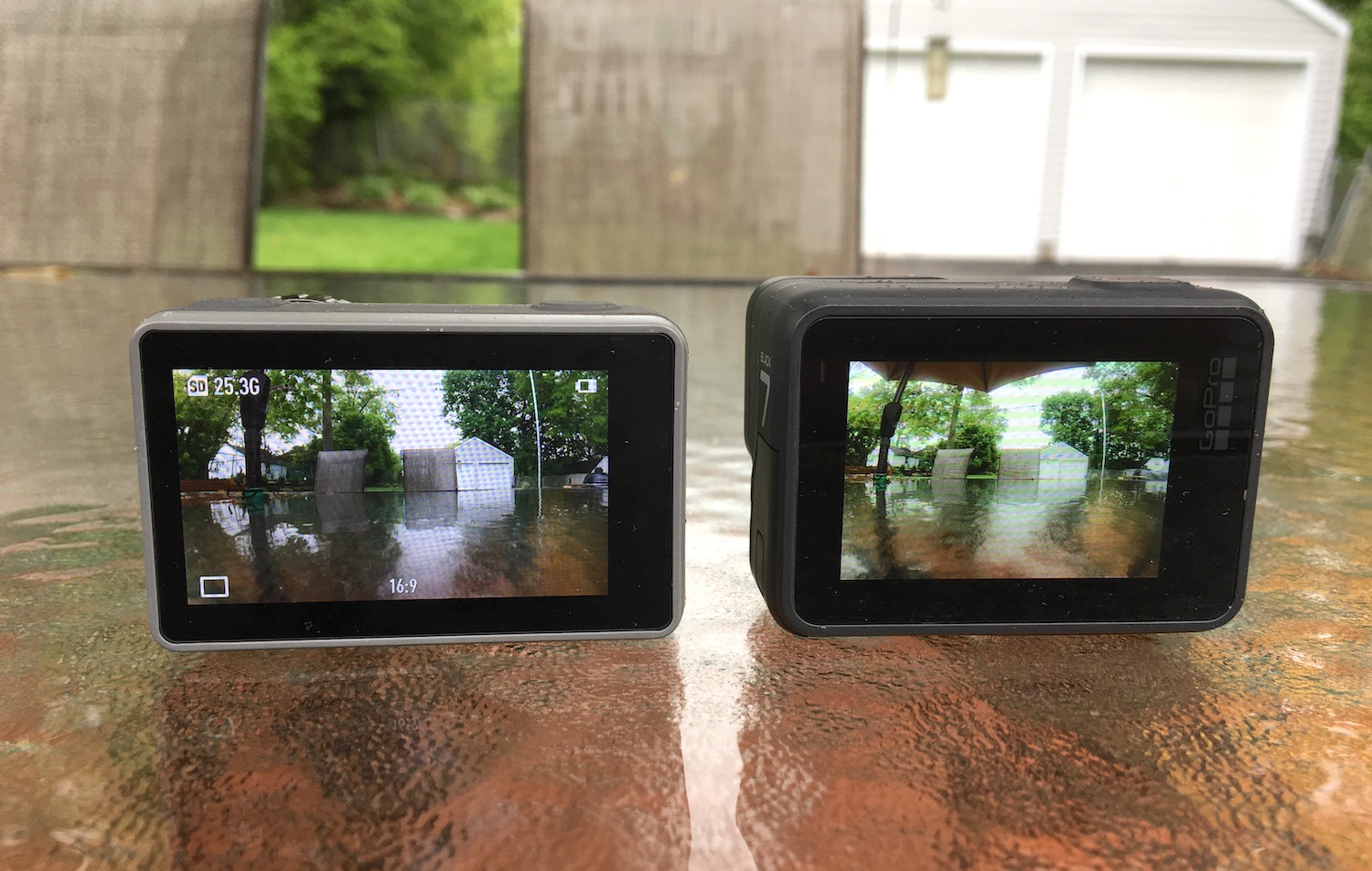
Both cameras are about the same size, shape and weight. The Hero7 is slightly taller, but the Osmo is a hair longer, thicker and heavier.
Video Quality
The DJI Osmo Action shoots video at 4K up to 60 fps, though you can also choose 50, 48, 30, 25 and 24 fps. If you lower the resolution to 1080p, you can shoot at 240 fps, the same as with the GoPro Hero7. Using the Osmo Action, I filmed some Parkour enthusiasts jumping and flipping over obstacles. Although there was a bit of graininess, the camera did a great job slowing down the action.
MORE: Best Action Cameras 2019
DJI's electronic image-stabilization feature, called RockSteady, will work when recording video, even up to 4K/60 fps. GoPro has its own EIS, called HyperSmooth. I tested both cameras by mounting them to the front of my bike, and riding them across a field, as well as through some tree- and pothole-lined streets. This feature worked exceedingly well on both cameras.
Here's what video from the Osmo Action looks like with IS turned on:
However, when comparing video from the Osmo Action and the Hero7 side-by-side, DJI's video, though more saturated with color, was much darker, and had much more trouble compensating for both light and dark areas in a single scene. The Hero7 tended to wash out brighter areas, such as when the sun came into the frame. But it did a much better job with the scene overall.
Above is footage from the Osmo Action.
And here is video from the GoPro Hero7.
The Osmo Action has an HDR mode for its video, which made it look a lot more like the Hero7's footage. Unfortunately, you can't use DJI’s image stabilization with HDR turned on. You can see here how much a difference image stabilization makes.
One other quibble: on the back of the GoPro is a small LED light that lets you know at a glance that you’re recording video, even when its screen is turned off. The Osmo Action has no such LED.
When taking still images, the Osmo Action can also shoot in bursts up to 5 fps. This feature worked OK; however, it didn't freeze the action of a flipping Parkour artist as much as I'd like.

Other features include manual controls over ISO, shutter speed and exposure compensation, voice control and time-lapse photography.
MORE: GoPro Hero7: The Smoothest-Looking Action Cam Yet
However, the Osmo Action is missing a few features that the Hero7 has: You can't adjust the camera's field of view, nor can you livestream from the camera to Facebook, YouTube and other social-media sites.
Bottom Line
Like it or not, the selfie stick is not going away. More and more cameras, like the Sony A6400 and the RX0 II, are adopting screens that can flip 180 degrees so you can frame yourself in the shot. The solution DJI uses with the Osmo Action is clever — just add a second, small screen.
Overall, the DJI Osmo Action is a solid action camera. It records video that's rich in color, and its image stabilization is tops, too. Still, the GoPro Hero7 bests it in several areas, the most notable of which is when capturing video with high dynamic range while moving. But, if you really want to make sure you're in the shot, then the Osmo Action is worth a look.
Credit: Tom's Guide

Michael A. Prospero is the U.S. Editor-in-Chief for Tom’s Guide. He oversees all evergreen content and oversees the Homes, Smart Home, and Fitness/Wearables categories for the site. In his spare time, he also tests out the latest drones, electric scooters, and smart home gadgets, such as video doorbells. Before his tenure at Tom's Guide, he was the Reviews Editor for Laptop Magazine, a reporter at Fast Company, the Times of Trenton, and, many eons back, an intern at George magazine. He received his undergraduate degree from Boston College, where he worked on the campus newspaper The Heights, and then attended the Columbia University school of Journalism. When he’s not testing out the latest running watch, electric scooter, or skiing or training for a marathon, he’s probably using the latest sous vide machine, smoker, or pizza oven, to the delight — or chagrin — of his family.
